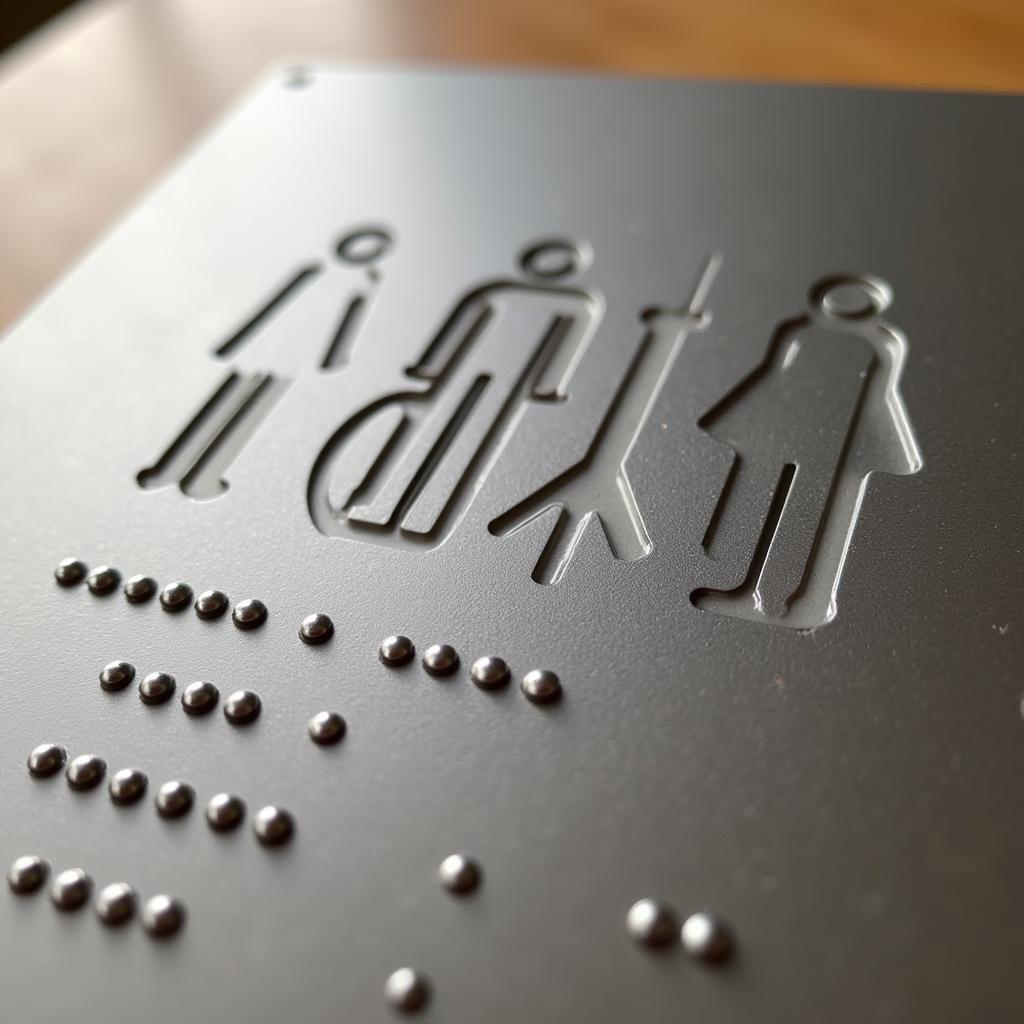Braille Restroom Signs: A Guide to Accessibility
October 19, 2024Braille Restroom Signs are an essential element of creating an inclusive and accessible environment for people with visual impairments. These signs use raised dots to represent letters and symbols, allowing individuals who are blind or have low vision to independently identify and locate restrooms.
 Close-up of a braille restroom sign
Close-up of a braille restroom sign
The Importance of Braille Restroom Signs
Imagine navigating an unfamiliar building without being able to see clearly. Simple tasks like finding the restroom can become incredibly challenging and even stressful. Braille restroom signs provide a crucial solution, empowering people with visual impairments to navigate public spaces with confidence and dignity.
Legal Requirements and Guidelines
In many countries, including the United States, braille restroom signs are not merely a matter of good practice but a legal requirement. The Americans with Disabilities Act (ADA) mandates the inclusion of braille and raised lettering on signage for accessible restrooms in public buildings and commercial facilities. These regulations ensure that people with visual impairments have equal access to essential facilities.
Design and Placement Standards
To maximize effectiveness, braille restroom signs must adhere to specific design and placement guidelines. These standards ensure that the signs are easily identifiable and usable by individuals with visual impairments. Here are some key considerations:
- Contrast: High contrast between the braille dots and the sign’s background is crucial for readability.
- Dot Size and Spacing: Braille dots must meet standardized dimensions and spacing requirements to be easily felt and interpreted.
- Placement Height and Location: Signs should be mounted at a height reachable by individuals using wheelchairs and positioned consistently throughout a building.
Beyond Restrooms: Braille Signage for All
While braille restroom signs are essential, accessibility extends far beyond restrooms. Braille signage should be implemented throughout buildings and public spaces to provide information about:
- Room numbers and names
- Elevators and stairs
- Emergency exits
- Accessible entrances
 A braille sign on a door indicating the room number and name
A braille sign on a door indicating the room number and name
Creating a More Inclusive World
Braille restroom signs are a powerful symbol of inclusion, demonstrating a commitment to creating a society that values the needs and experiences of all individuals. By embracing accessible design principles, we can make a tangible difference in the lives of people with disabilities, fostering a more equitable and welcoming world for everyone.
FAQs about Braille Restroom Signs
1. What are the benefits of using braille restroom signs?
Braille restroom signs provide independence and dignity for people with visual impairments, allowing them to navigate restrooms and other public spaces without assistance.
2. Are braille restroom signs legally required?
Yes, in many countries, including the United States, braille restroom signs are mandated by accessibility laws like the Americans with Disabilities Act (ADA).
3. Where can I find braille restroom signs that meet accessibility standards?
Numerous manufacturers and suppliers specialize in ADA-compliant signage, offering a wide range of braille restroom signs that meet legal requirements.
Need Help with Accessibility?
If you need assistance with braille restroom signs or other accessibility solutions, please don’t hesitate to contact us. Call us at 0963418788, email us at [email protected], or visit our office at 2M4H+PMH, Phường Nghĩa Thành, Gia Nghĩa, Đắk Nông, Việt Nam. Our dedicated team is available 24/7 to assist you with all your accessibility needs.